In April this year, the China Customs Administrative General published its 2016 IP protection report. This report is issued annually and we have picked out what we consider to be the key points.
Over the course of 2016 there were around 19,500 IP cases, 17,400 shipments of suspected infringing goods seized, involving around 42,058,200 articles of goods.
Comparing that with previous years you can see that apart from an increase in 2014 there has been a steady decline in the number of cases, shipment seizures and goods seizures.
|
|
2016 |
2015 |
2014 |
2013 |
|
IP case number |
19,500 |
25,000 |
27,000 |
23,600 |
|
shipment seized |
17,400 |
23,000 |
24,000 |
24,464 |
|
Article of goods seized |
42,058,200 |
70,000,000 |
92,000,000 |
76,000,000 |
What can we learn from the cases in 2016?
99% seizures and 91.67% of seized goods came about directly from Customs’ own initiative
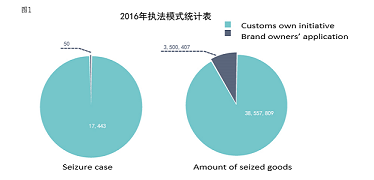
http://www.customs.gov.cn/Portals/0/2017web/jrhg/zhishichanquan2016_1.jpg
98.56% of seizures were for trade mark infringement (similar to the 2015 and 2014 figures). However, there was an 87.8% increase on seizures for patent infringement.
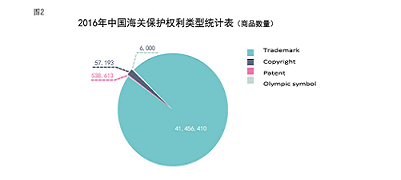
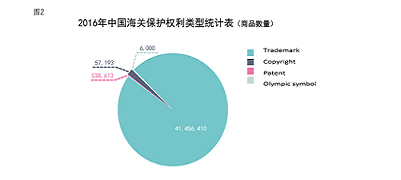
http://www.customs.gov.cn/Portals/0/2017web/jrhg/zhishichanquan2016_2.jpg
Most of the seized shipments and goods were for export (96.2% of shipments and 98.95% of goods).
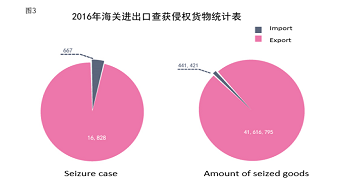
http://www.customs.gov.cn/Portals/0/2017web/jrhg/zhishichanquan2016_3.jpg
Which transportation channels are being used?
As in previous years, the main transportation channels for infringing goods were via the post and ocean shipping.
Post channels: 14,227 cases or 81% of the total but a 28.9% decrease from 2015. However, monetary value was small.
Ocean shipping: 39,401,332 shipments seized, which is 42% decrease from 2015.
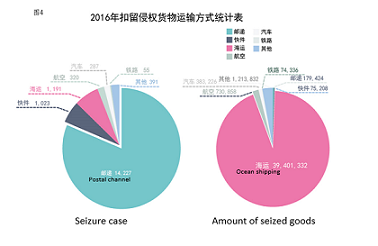
http://www.customs.gov.cn/Portals/0/2017web/jrhg/zhishichanquan2016_4.jpg
Consumer goods made up the majority of goods seized, specifically tobacco, cosmetics and skin care products. 2015 saw seizure of medicine, food and beverages significantly increased, while jewellery, medical equipment and watches had largely decreased.
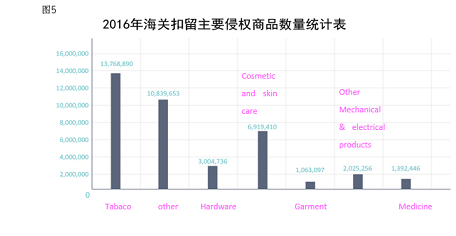
http://www.customs.gov.cn/Portals/0/2017web/jrhg/zhishichanquan2016_5.jpg
It appears that Customs has made more efforts to protect Chinese brands. 7,578,500 were seized, a 13.2% increase on 2015 (of the infringing of Chinese brands is still relatively new. In 2015, there were 1,939 cases infringing brands a 130.29% increase than 2014).
33.6% of seized goods were inbound to Chinese markets compared with 2015. This figure has increased year-on-year for 10 years.
What actions are Customs taking to protect brands?
1. Special IP campaigns:
2. Cooperation with authorities:
3. Policy innovation:
4. Cooperation with business
5. Cooperation with international customs
6. Customs has stepped up efforts to raise awareness of IP protection across China.
Source: http://www.customs.gov.cn/publish/portal0/tab49564/info846639.htm